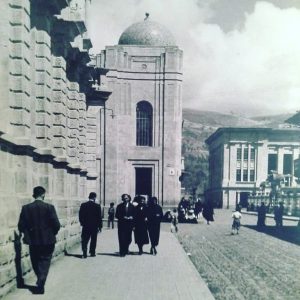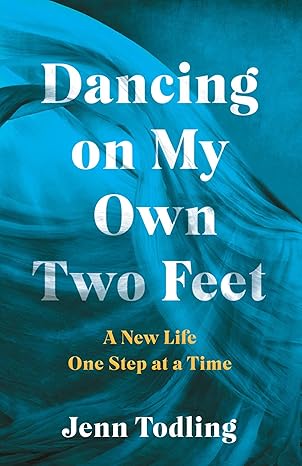All Set
 You probably learned in high school that, along with story and character, setting is one of the essential elements of a novel. Those days of hurried readings and book reports are long gone, but I clearly remember thinking: who cares about setting? I just want to know what the story is about.
You probably learned in high school that, along with story and character, setting is one of the essential elements of a novel. Those days of hurried readings and book reports are long gone, but I clearly remember thinking: who cares about setting? I just want to know what the story is about.
Except that the old me didn’t realize then that setting is not just a name or a year on a list of data about a particular book. Setting is what gives a story its flavor, its atmosphere, its mood. It’s not the same to read a novel that takes place in the harsh winters of Siberia than one set on a Caribbean Island during a summer vacation. The same can be said for time frame. Reading a novel set in Medieval England is a very different experience from reading one set in contemporary New York. Although it’s true that the human experience—with its limitations, fears, goals—can be universal, time and place makes each of our experiences different and unique.
As my debut novel, The Sisters of Alameda Street, makes its way into the world, many readers may be exposed to Ecuador for the first time. My native country is a place that I consider “virgin territory” for historical fiction because not a lot of authors are writing about the fascinating things that have happened there. As a writer, I couldn’t resist the lure of Ecuador’s rich history and geography. In one small area you can find beaches, mountains, jungle and of course, the Galapagos Islands—a complex and exciting playground for fiction!
My novel begins in Guayaquil, Ecuador’s main port and largest city, where Malena Sevilla lives. That is, until her father’s mysterious and unexpected death forces her to leave the coast and venture into San Isidro, an old-fashioned town tucked in the Andes Mountains. Malena believes that her long-lost mother lives there and she’s determined to find her.
Confession: San Isidro is not a real town. It’s the combination of two cities in Ecuador: Ambato, my father’s hometown, and Baños, a place known for its thermal waters and a tourist attraction for extreme sports’ lovers. Since hot springs play an important role in one of the sisters’ storylines, Baños became an ideal source of inspiration. So was my grandparents’ house in Ambato. Whereas my family had a fabric shop on the first floor of their house, the Platas family owns a jewelry store. And yet, the fictional house in my novel is somewhat evocative of my grandparents’ house, at least in my mind.
In Ecuador, people from the coast are perceived to be more outgoing and carefree than the people from the mountains. This belief worked perfectly well for my story’s purposes. I needed to portray a family shrouded in secrecy, convention and the fear of “what will people say” (el qué dirán). In comes Malena, a girl from the coast that initially shocks some of the family members with her sleeveless shirts, modern ideas, and bad reputation. Keep in mind that the novel flits between the late 1930’s and the early 1960’s, so what may seem trivial in our contemporary society had a lot of importance then.
The place where someone grows up molds a person. So does an era. Fiction is no different; setting is deeply embedded in the history of a character, and therefore integral to the story’s development and the character’s journey.
.–
 Lorena Hughes was born and raised in Ecuador until moving to the United States at eighteen. She has a degree in fine arts and mass communication & journalism from The University of New Mexico. Her previous work has won first place at the 2011 Southwest Writers International Contest in the historical fiction category, earned an honorable mention at the 2012 Soul-Making Keats Literary Competition, and placed quarter-finalist in the 2014 Amazon Breakout Novel Award. Her articles have appeared in What’s Up weekly and The Writing Sisterhood blog.
Lorena Hughes was born and raised in Ecuador until moving to the United States at eighteen. She has a degree in fine arts and mass communication & journalism from The University of New Mexico. Her previous work has won first place at the 2011 Southwest Writers International Contest in the historical fiction category, earned an honorable mention at the 2012 Soul-Making Keats Literary Competition, and placed quarter-finalist in the 2014 Amazon Breakout Novel Award. Her articles have appeared in What’s Up weekly and The Writing Sisterhood blog.
For more information, visit her website: www.lorena-hughes.com
Twitter: @SisterLorena
—
About THE SISTERS OF ALAMEDA STREET
 When Malena’s tidy, carefully planned world collapses with her father’s mysterious suicide, she finds a letter, signed with an “A,” which reveals that her mother is very much alive in San Isidro—a quaint town tucked in the Andes Mountains. Intent on meeting her, Malena arrives at Alameda Street and meets four unconventional women who couldn’t be more different from one another, but who share one thing in common: all of their names begin with an A.
When Malena’s tidy, carefully planned world collapses with her father’s mysterious suicide, she finds a letter, signed with an “A,” which reveals that her mother is very much alive in San Isidro—a quaint town tucked in the Andes Mountains. Intent on meeting her, Malena arrives at Alameda Street and meets four unconventional women who couldn’t be more different from one another, but who share one thing in common: all of their names begin with an A.
To avoid a scandal, Malena assumes another woman’s identity and enters their home to discover the truth. Could her mother be Amanda, the iconoclastic widow who opens the first tango nightclub in a conservative town? Ana, the ideal housewife with a less-than-ideal past? Abigail, the sickly sister in love with a forbidden man? Or Alejandra, the artistic introvert scarred by her cousin’s murder? But living a lie will bring Malena additional problems, such as falling for the wrong man and loving a family she may lose when they learn of her deceit. Worse, her arrival threatens to expose long-buried secrets and a truth that may wreck her life forever.
Set in 1960s Ecuador, The Sisters of Alameda Street is a sweeping story of how one woman’s search for the truth of her identity forces a family to confront their own past.
Category: On Writing





























Comments (1)
Trackback URL | Comments RSS Feed
Sites That Link to this Post